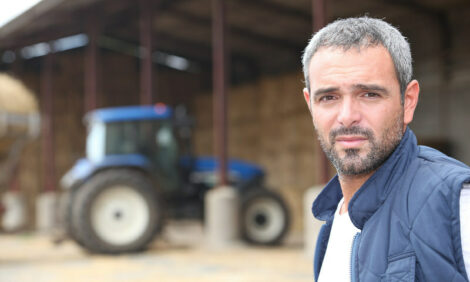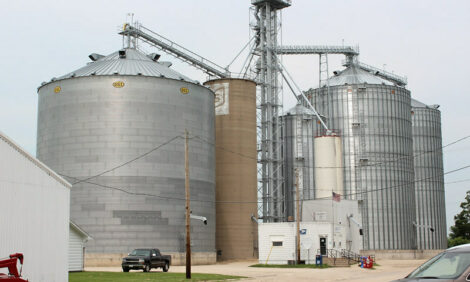



Porcine Circovirus Causing Problems: Part 2
CANADA - Last week, we wrote about the causes and symptoms of Porcine Circovirus Type 2 (PCV2), which included Post-weaning Multi-systemic Wasting Syndrome, and a number of other diseases.Veterinary practitioners Dr. George Charbonneau and Dr. Steve Wolfgram of Swine Services in Ontario, Canada, put together a discussion paper on PCV2 with associates Ann Coyle, Jean Smith and Ken Marenger. We referred to this paper last week, which was formulated from a number of sources, and we again use this informative piece as our primary source. We will continue to follow this disease, as research is ongoing.
When it comes to identifying PCV2, a laboratory diagnosis is always required. Dr. John Kolb, Senior Manager Swine Biologicals for Boehringer Ingelheim says, “The key issue is to make an accurate diagnosis.
Initially, a tentative diagnosis is based on herd history or clinical signs. Gross post mortems may show evidence of skin lesions, hepatitis, enteritis and interstitial pneumonia, among other signs. According to Swine Services’ discussion paper, typically the lungs fail to collapse when the chest is opened if the problem is PCV2.
When Porcine Dermatitis and Nephropathy Syndrome is involved, the kidneys are mottled in appearance and have multiple small red hemorrhages over the surface. In reproductive failure, massive infiltration of virus has been detected around the lesions of myocarditis in the heart of the fetus or stillborn pig.
Of primary importance is the involvement of your veterinarian and a laboratory diagnosis for a definitive diagnosis.
“Unfortunately, PCV2 has become the ‘new PRRS,’ in that it can get the blame for a lot of problems,” states Kolb. As a result, sometimes producers don’t make the management changes that are necessary because they are hard or unpleasant.
Treatment, control and prevention should include a review of the following points:
-
Feed – Although no specific nutritional factors with respect to energy, protein, mineral or vitamins have been associated with the disease, it has been suggested that increased levels of Vitamin E and selenium may enhance immune system function. Vitamin C has also been suggested to be helpful. Review ration expectations by pig weight to ensure sufficient density for optimum immune function and lean gain potential. Also, make sure pigs have adequate access to feeders, so they don’t have to fight for food. Dr. Kolb suggests you reduce crude protein and use synthetic amino acids – this seems to help when liver and kidney function are reduced.
-
Water – Again, no specific nutritional factors with water have been associated with PCV2, but inadequate access to water will increase stress levels. Control excessive water contaminants, stray voltage, restricted water flow at the drinkers and make sure an adequate number of drinkers per pen are available.
-
Environment – Ventilation, temperature and stocking densities are all important for disease control. Try to minimize stress as much as possible Pen partitions should be designed to prevent nose-to-nose contact between pigs to reduce the PCV2 viral challenge.
Cross-fostering and mixing – Cross-fostering of pigs after 24 hours of birth may help spread the virus, and this should be avoided whenever possible. If late fostering needs to be used, set up a nurse sow in a separate area specifically for this purpose. Try to keep mixing of pigs at a minimum. Mixing increases pig-to-pig contact and places pigs under stress. Both these factors appear to significantly increase the prevalence of the disease. Implement all in/all out production at all levels, and keep group sizes as small as possible. -
Sanitation – Rooms should be washed thoroughly to remove all visible signs of manure from floors, walls, feeders and drinkers. Use products that remove fats, minerals and biofilm in order to allow the disinfectant to work. Clean rooms early in the downtime so they have a maximum amount of time to dry. This will greatly reduce the population of pathogens. Make sure the disinfectant selected is appropriate for the potential triggering diseases as well as PCV2.
-
Equipment disinfection – Implement strict hygiene measures on processing equipment and ensure good hygiene standards when processing pigs. Use new needles and sterilize instruments. It has been suggested that needles and instruments be dipped in a 2%solution of Virkon S for 60 seconds between pigs to kill the virus. Aerial disinfection may reduce the spread of the virus, though this hasn’t been proven. Whenever possible, allow pens to dry out before restocking. Leaving a room completely dry with or without supplemental heating is one of the most effective ways of killing viruses and bacteria.
-
Concurrent disease – Parasitic burdens in the breeding herd result in lower immunity, and this leaves the door open for a PCV2 infection. Cofactors or triggers that amplify the PCVD problem need to be controlled as well. PRRS virus, Swine Influenza virus and Mycoploasma hyopneumonia are examples of disease organisms that work synergistically with Porcine Circovirus.
-
Hospital Pen/Recovery Room – If pigs show signs of PCV2 infection, they should be promptly moved to the hospital pen. The longer sick pigs are left with healthy pigs, the greater the likelihood more pigs will become infected. On this same note, Dr. Kolb suggests you humanely euthanize pigs that have lost considerable weight. They will not recover due to significant organ damage, and they are shedding massive amounts of virus into the environment.
-
Medication – Antibiotics do not have a direct affect on PCV2, though they may help prevent bacterial infections that might precede or follow PCV2 disease.
-
Vaccination – The timing of vaccinations should be reviewed. While at the present time there is no vaccine for PCV2 in the United States, researchers are continuing to work on finding answers to this disease.
As with most treatment and control programs, good management is the key. While that might not keep your herd from becoming infected, it can at least minimize the economic impact of the disease. Most importantly, work with your veterinarian to develop a protocol for your herd. We will continue to report on new information surrounding PCV2 as it becomes available.
For more information, visit our PMWS Technical Zone
Source: JoAnn Alumbaugh - 3rd April 2006
Reproduced courtesy Farms.com








